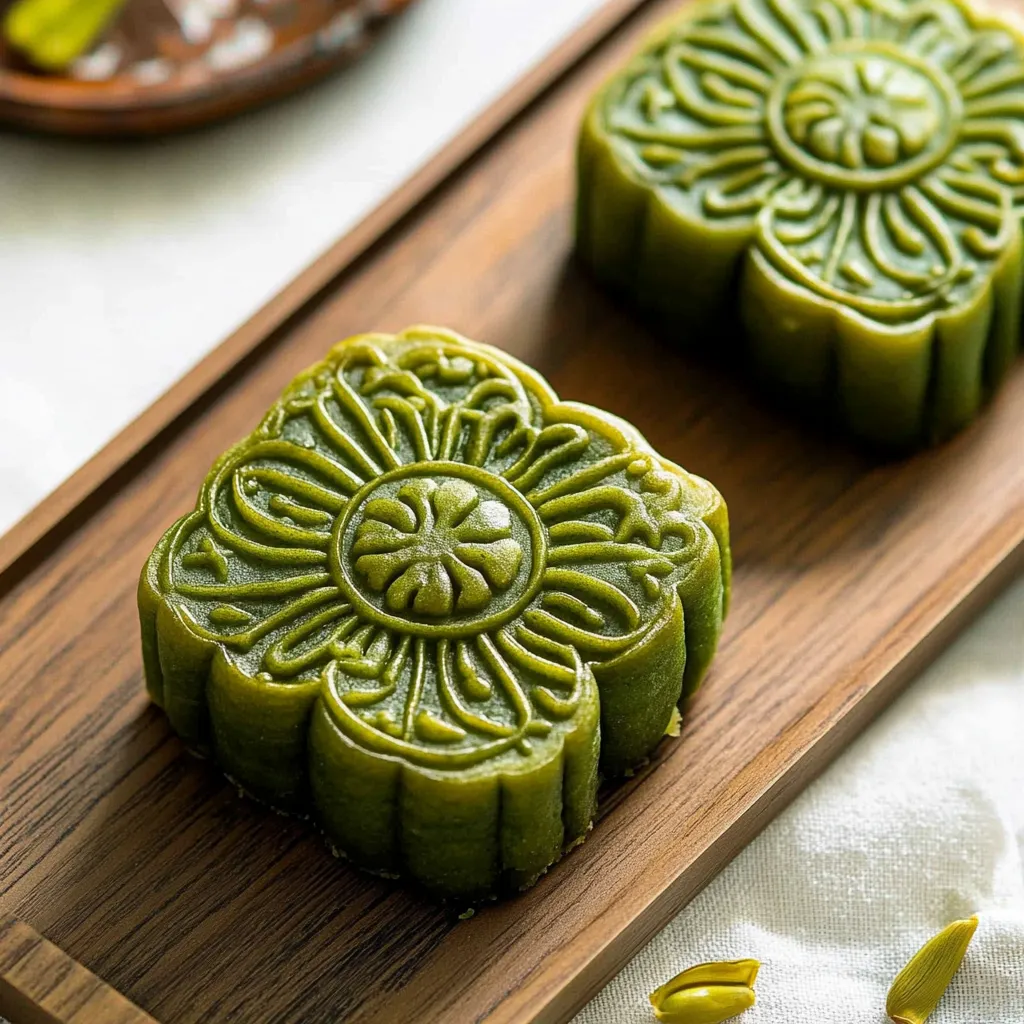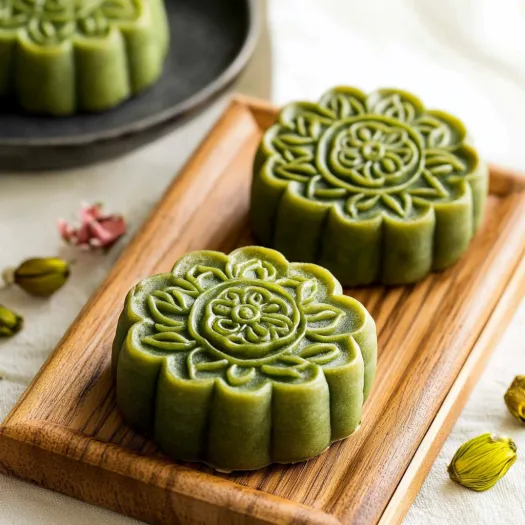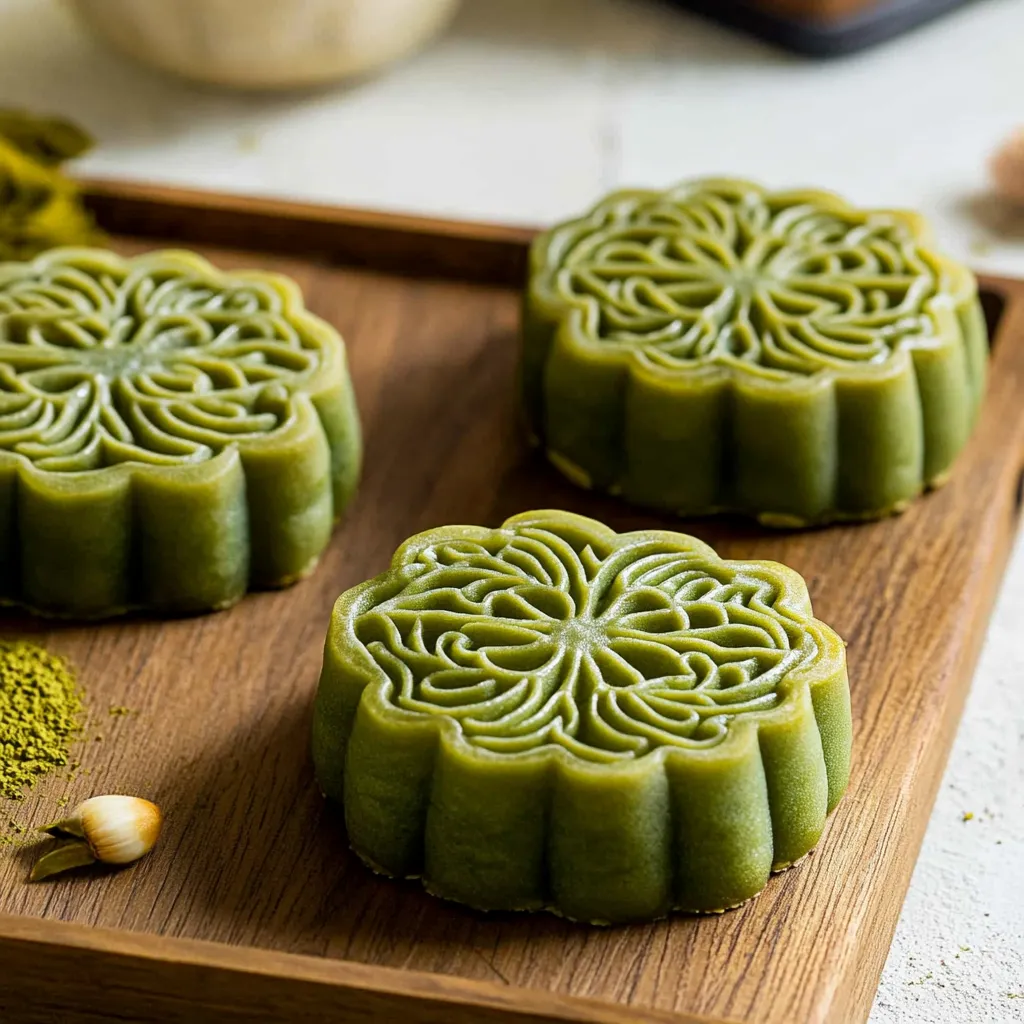 Pin it
Pin it
This matcha green tea snow skin mooncake recipe brings the delicate flavors of Japanese and Chinese traditions together in a beautiful fusion dessert. The light, chewy exterior with its stunning emerald hue perfectly complements the sweet red bean filling, creating a treat that's as impressive to look at as it is to eat.
I first made these mooncakes during the Mid-Autumn Festival last year when I couldn't find any at local bakeries. My family was so impressed by the vibrant green color and delicate texture that they now request them for special occasions beyond the traditional holiday.
Ingredients
- Sweetened white bean paste: Provides a subtle sweetness and smooth texture that balances perfectly with the matcha
- Mochiko flour: Creates that signature chewy mochi texture that makes snow skin mooncakes so delightful
- Matcha powder: Gives these mooncakes their gorgeous green color and distinctive flavor, look for ceremonial grade for best results
- Red bean neri yokan: Adds a traditional filling with just the right level of sweetness
Step-by-Step Instructions
- Prepare the filling:
- Cut red bean neri yokan into small cubes that will fit inside your mooncake mold. This preparation ensures each mooncake has the perfect amount of filling. If using homemade red bean paste, you can shape it into balls beforehand to make the assembly process easier.
- Mix the dry ingredients:
- Combine the sweetened white bean paste with the sweet rice flour in a sturdy microwaveable glass bowl until completely incorporated. The texture should be somewhat grainy at this stage but make sure no large clumps of flour remain. This creates the base for your snow skin dough.
- Add flavor and liquid:
- Sprinkle in the matcha powder and pour in the water, whisking until the mixture becomes smooth and the matcha is evenly distributed. The beautiful green color will start to develop as you mix, though it will deepen after cooking. Make sure there are no dry spots or clumps.
- Cook the dough:
- Microwave the mixture for exactly 1 minute. The dough will begin to cook around the edges while the center remains partially uncooked. This partial cooking is normal and will be addressed in the next step. The dough will look slightly translucent where it has cooked.
- Stir thoroughly:
- Use a solid metal spoon to vigorously mix the partially cooked dough, incorporating the cooked portions with the uncooked center. The mixture will be very hot and sticky at this point. Be careful not to burn yourself as you stir, and keep mixing until the dough looks more uniform in texture.
- Complete the cooking:
- Microwave the partially cooked dough for another minute. This second cooking session will complete the gelatinization of the rice flour, creating that signature chewy texture. The dough will become more translucent and develop a slight sheen when properly cooked.
 Pin it
Pin it
The matcha is truly the star ingredient in this recipe. I experimented with different grades and found that ceremonial grade matcha produces the most vibrant color and authentic flavor. The first time I served these at a family gathering, my grandmother who rarely compliments my cooking asked for the recipe to share with her friends.
Working With Mooncake Molds
Traditional mooncake molds come in various designs, from classic floral patterns to modern shapes. Before using your mold, lightly dust it with cornstarch or spray with cooking oil to prevent sticking. Press firmly when molding your mooncakes to ensure the pattern transfers clearly. If you notice the design isn't sharp enough, you can always put the mooncakes in the freezer for 15 minutes then remold them for cleaner lines.
Filling Variations
While red bean yokan is traditional, these snow skin mooncakes are incredibly versatile. Try custard filling for a creamy texture, mung bean paste for a less sweet option, or black sesame paste for a nutty flavor profile. For a fusion twist, consider chocolate ganache or peanut butter. Regardless of filling, keep the same proportion of filling to dough for the best texture and balance of flavors.
Serving Suggestions
These mooncakes pair beautifully with hot Japanese green tea or Chinese oolong tea, which helps balance their sweetness. For a more modern pairing, try serving with an iced matcha latte. Traditionally these would be served as part of a tea ceremony or after dinner, but they also make a lovely afternoon treat. Present them on a bamboo tray with fresh fruit for an elegant dessert platter.
 Pin it
Pin it
These delicate mooncakes are a true showstopper, perfect for any special occasion or simply to enjoy as a delightful treat.
Frequently Asked Questions
- → Can I use a different filling for these snow skin mooncakes?
Yes, you can substitute the red bean yokan with other fillings like white bean paste, lotus seed paste, custard, or even chocolate ganache. The key is ensuring your filling is firm enough to hold its shape when molded.
- → Why does my mooncake dough stick to the mold?
This typically happens when the mold isn't properly greased. Make sure to lightly oil your mooncake mold before each use. You can also dust the mold with a small amount of cooked glutinous rice flour to prevent sticking.
- → How long can I store these matcha snow skin mooncakes?
These mooncakes are best consumed within 2-3 days when kept refrigerated in an airtight container. For longer storage, you can freeze them for up to 2 weeks, but the texture may change slightly upon thawing.
- → Why is my snow skin dough too sticky?
The dough may be sticky if it's undercooked or if there's too much moisture. Ensure you're cooking the dough thoroughly in the microwave and using the correct measurements. If still sticky, you can add a bit more glutinous rice flour.
- → Do I need special equipment to make these mooncakes?
The only specialized equipment you need is a mooncake mold, which gives the distinctive patterned appearance. These molds are available in Asian grocery stores or online. Everything else requires standard kitchen equipment.
- → Can I adjust the matcha flavor?
Absolutely! For a stronger matcha flavor, increase the powder to 1.5 or 2 teaspoons. For a milder taste, reduce to 1/2 teaspoon. The quality of your matcha powder will also affect the intensity of flavor and color.
